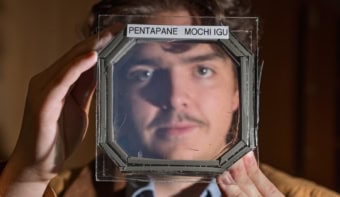
Alternatives to the lithium-ion battery (LIB) become increasingly necessary as the demand for portable electronics, electric vehicles and grid-level energy storage technologies continues to develop. Current Li-ion chemistries are toxic to the environment, highly flammable, and will grow in cost as material needs increase. Instead, researchers are exploring new battery technologies such as aluminium ion-based systems, which have the potential to deliver the enormous capacities and high current capabilities necessary to power a sustainable future. Now, scientists at Clemson University in the US have built a prototype Al-ion battery (AIB) that uses a graphene electrode to intercalate tetrachloroaluminate (AlCl4–). The researchers have used the device to investigate the effect of defects and doping on battery performance.
Aluminium-ion batteries are increasingly considered as a possible alternative to Li-ion battery systems, but so far the element has been difficult to study. Unlike in LIBs, where the mobile ion is Li+, aluminium forms a complex with chloride in most electrolytes and generates an anionic mobile charge carrier, usually AlCl4– or Al2Cl7–. Writing in Nano Energy, Anthony Childress and colleagues at Clemson University’s Clemson Nanomaterials Institute have elucidated the intercalation mechanism of the AlCl4– anion in graphene electrodes, and provided a unique insight into the influence of defects and doping on the intercalation process.
Controlling graphene’s properties
Introducing defects into graphene has previously been shown to shift the Fermi level of the material, which corresponds to the cell potential of the battery. It has also been observed that the introduction of pores can facilitate access to the inner volume of the cathode, allowing ions to move in and out quickly for fast charging.
To investigate these factors, the Clemson group formed few-layer graphene (FLG) by decomposing methane on nickel foam at high temperatures. The presence of defects was controlled by sintering the pristine FLG with argon plasma. Alternatively, different levels of nitrogen dopants were introduced by adding a nitrogen precursor during the original deposition process. After they dissolved the nickel foam, the researchers were left with either pristine or modified graphene.
Understanding the battery performance
The team constructed batteries with aluminium anodes, pristine or modified FLG cathodes, and an ionic liquid with AlCl3 salt as the electrolyte. With pristine FLG as the cathode, the battery achieved a capacity of over 70 mAh/g for 1000 cycles. Although such a capacity is modest compared to modern Li-ion batteries, which typically store about twice the charge, the performance was impressive considering the extremely high charging/discharging rates that were achieved, with a full charge–discharge cycle taking less than three minutes.
The researchers attribute the exceptional reversibility they observed in this system to the robustness of the pristine FLG. When the FLG with induced defects was tested in a battery, the researchers found that it did not perform well at high current rates, since the defects resulted in poor interconnectivity of the FLG sheets at the edges, and inhibited electron transfer during fast cycling. The introduction of nitrogen doping resulted in a significant decrease in intercalation, and caused chlorine gas to be produced. The team speculate that the presence of nitrogen in the FLG induces some catalytic activity, liberating chlorine from the electrolyte.
The intercalation and deintercalation of AlCl4– in FLG were monitored by Raman spectroscopy, and the researchers found that FLG was electron-donating during the charge process. They then performed density functional theory (DFT) calculations to describe the interaction between the AlCl4– anion and the carbon layers. This model resulted in a slightly distorted AlCl4–tetrahedron, which is indicative of the anion accepting approximately one electron, and provides a very strong agreement between the observed Raman measurements and the DFT modelling.
This work informs the successful design of AIBs with graphene, and demonstrates that this battery configuration can perform very well over 1000 cycles at high rates of charge and discharge. The researchers also provide a fundamental insight into the intercalation/deintercalation of the AlCl4– anion in FLG. Further high-quality investigations of AIB chemistries such as this one will bring us closer and closer to a sustainable energy storage technology.
Details of the research can be found in Nano Energy.



